
As is evident from the Holy Scriptures, bows, kneeling and prostrations were employed during prayer even in the Old Testament. The holy Prophet King David refers to bowing down to God or to His temple in many of the psalms, for example: "Bow down to the Lord in His holy court" (Ps. 28:2); "I shall bow down toward Thy holy temple in fear of Thee" (Ps. 5:8); "O come, let us worship and fall down before Him" (Ps. 94:6); "Let us go forth into His tabernacles, let us bow down at the place where His feet have stood" (Ps. 131:7), etc.
About kneeling, it is known that the holy Prophet Daniel, for example, thrice daily "knelt upon his knees, and prayed and gave thanks before his God" (Dan. 6:10). Full prostrations are also mentioned in the books of the Old Testament. For example: the Prophets Moses and Aaron besought God, "having fallen on their faces" (Numbers 16:22), to be merciful to the children of Israel who had grievously sinned. In the New Testament also, the custom of performing kneeling, prostrations and, of course, bows had been preserved and still had a place at the time of the earthly life of our Lord Jesus Christ, Who sanctified this Old Testament custom by His own example, praying on bended knees and failing down upon His face. Thus, we know from the Holy Gospels that before His passion, in the Garden of Gethsemane, He "kneeled down, and prayed" (Matt. 26:39), "fell on the ground and prayed" (Mark 14:35). And after the Lord's ascension, during the time of the holy apostles, this custom, of which the Holy Scriptures also speak, existed unchanged. For example, the holy Protomartyr and Archdeacon Stephen "knelt down," and prayed for his enemies who were stoning him (Acts 7:60); the Apostle Peter, before raising Tabitha from the dead, "knelt down, and prayed" (Acts 9:40), etc. It is an indisputable fact that, as under the first successors of the apostles, so even in much later periods of the existence of the Church of Christ, kneeling, bows and prostrations upon the ground were always employed by true believers at domestic prayers and at the divine services. In antiquity, among the other bodily activities, kneeling was considered the outward manifestation of prayer most pleasing to God. Thus, St. Ambrose of Milan says: "Beyond the rest of the ascetic labors, kneeling has the power to assuage the wrath of God and to evoke His mercy" (Book VI on the Six Days of Creation, ch. 9).
The canons concerning bows and kneeling now accepted by the Orthodox Church and set forth in the books of the divine services, and particularly in the Church Typicon, are observed in monasteries. But in general, Orthodox Christian laymen who have zeal are, of course, permitted to pray on their knees in church and to make full prostrations whenever they wish, excepting only those times when the Gospel, Epistle, Old Testament readings, six psalms and sermon are read. The Holy Church lovingly regards such people, and does not constrain their devout feelings. However, the exceptions with regard to Sundays and the days between Pascha and Pentecost apply generally to everyone. According to ancient tradition and a clear church law, kneeling must not be performed on these days. The brilliant solemnity of the events which the Church commemorates throughout the period of Pentecost and on Sundays precludes, in and of itself, any external manifestation of sorrow or lamentation over one's sins: for ever since Jesus Christ, "blotting out the handwriting of the ordinances that was against us, ... nailing it to His Cross; and having spoiled principalities and powers, He made a show of them openly, triumphing over them in it" (Col. 2:14-15)—ever since then "there is, therefore, no condemnation to them who are in Jesus Christ" (Rom. 8:1). For this reason, the practice was observed in the Church from the earliest times, beyond a doubt handed down by the apostles, whereby on all these days, in that they are consecrated to the commemoration of the glorious victory of Jesus Christ over sin and death, it was required to perform the public divine service brightly and with solemnity, and in particular without kneeling, which is a sign of repentant grief for one's sins. The second century writer Tertullian gives testimony concerning this practice: "On the Lord's Day (i.e. Sunday) we consider it improper to fast or to kneel; and we also enjoy this freedom from Pascha until Pentecost" (On the Crown, ch. 3). St. Peter of Alexandria (3rd cent.—cf. his Canon XV in the Rudder), and the Apostolic Constitutions (Book II, Ch. 59) also say the same thing.
Subsequently, the First Ecumenical Council found it necessary to make this legally binding by a special canon obligatory for the entire Church. The canon of this council states: "Since there are some persons who kneel in church on Sundays and on the days of Pentecost, with a view to preserving uniformity in all parishes, it has seemed best to the holy council for prayers to be offered to God while standing" (Canon XX).
Pointing out this canon, St. Basil the Great explains the rationale and meaning of the practice established by it thus: "We stand up when praying on the first of the week, though not all of us know the reason. For it is not only that it serves to remind us that when we have risen from the dead together with Christ we ought to seek the things above, in the day of resurrection of the grace given us, by standing at prayer, but that it also seems to serve in a way as a picture of the expected age. Wherefore, being also the starting point of days, though not the first with Moses, yet it has been called the first. For it says: ‘The evening and the morning were the first day’ (Gen. 1:5), on the ground that it returns again and again. The eighth, therefore, is also the first, especially as respects that really first and true eighth day, which the Psalmist too has mentioned in some of the superscriptions of his psalms, serving to exhibit the state which is to succeed this period of time, the unceasing day, the day without a night that follows, the day without successor, the never-ending and unaging age. Of necessity, therefore, the Church teaches her children to fulfill their obligations to pray therein while standing up, in order by constantly reminding them of the deathless life to prevent them from neglecting the provisions for the journey thither. And every Pentecost is a reminder of the expected resurrection in the age to come. For that one first day, being multiplied seven times over, constitutes the seven weeks of the holy Pentecost. For by starting from the first day of the week, one arrives on the same day… The laws of the Church have taught us to prefer the upright posture at prayer, thus transporting our mind, so to speak, as a result of a vivid and clear suggestions, from the present age to the things come in the future. And during each kneeling and standing up again we are in fact showing by our actions that is was through sin that we fell to earth, and that through the kindness of the One Who created us we have been called back to Heaven…" (Canon XCI of St. Basil the Great). The three well-known kneeling prayers of Pentecost composed by this great Father of the Church are thus not read at third hour, when the Holy Spirit descended upon the Apostles, nor at Liturgy on Pentecost, but at vespers, which is already part of the following day, after the Entrance. The holy Father was determined not to break the ancient custom of the Church.
In Canon XC of the Council of Trullo, held in conjunction with the Sixth Ecumenical Council, we read: "We have received it canonical from our God-bearing Fathers not to bend the knee on Sundays when honoring the resurrection of Christ. Since this observation may not be clear to some of us, we are making it plain to the faithful, that after the entrance of those in holy orders into the sacrificial altar on the evening of the Saturday in question, let none of them bend the knee until the evening of the following Sunday, when, following the entrance after the lamps have been lit, again bending knees, we thus begin to offer our prayers to the Lord. For, inasmuch as we have received it that the night succeeding Saturday was the precursor of our Savior’s rising, we commence our hymns at this point in a spiritual manner, ending the festival by passing out of darkness into light, in order that we may hence celebrate the resurrection together for a whole day and a whole night." John Zonaras, explaining the canon, says: "Various canons have made it a law not to kneel on Sundays or during the fifty days of Pentecost, and Basil the Great also supplied the reasons for which this was forbidden. This canon decrees only with regard to Sunday, clearly indicates from what hour and until hour to kneel, and says: ‘On Saturday, after the entrance of the celebrants into the altar at vespers, no one may bend the knee until vespers on Sunday itself, when, i.e., again the entrance of the celebrants takes place: for we do not transgress by bending the knee and praying in such a manner from that time on. For Saturday night is considered the night of the day of resurrection, which, according to the words of this canon, we must pass in the chanting of psalms, carrying the feast over from darkness to light, and in such manner celebrate the resurrection for the entire night and day" (Book of the Canons With Interpretations, p. 729).
There appears in the Church Typicon a direction concerning how the priest must approach and kiss the Gospel after reading it during the all-night vigil for the resurrection: "Do not make prostrations to the ground, but small bows, until the hand touches the ground. For on Sunday and feasts of the Lord and during the entire fifty days between Pascha and Pentecost the knee is not bent," (Typicon, ch. 2).
Nevertheless, standing at the divine services on Sunday and on the days between Pascha and Pentecost was the privilege of those who were in full communion with the Church; but the so-called "penitents" were not dispensed from kneeling even on those days.
We will close with these words from the famous interpreter of the Church canons, Theodore Balsamon, Patriarch of Antioch: "Preserve the canonical decrees, wherever and however they should be phrased; and say not that there are contradictions among them, for the All-holy Spirit has worded them all" (Interpretation of Canon XC of the Council of Trullo).
From Orthodox Life, Vol. 27, No. 3 (May-June, 1977), pp. 47-50.
http://orthodoxinfo.com/praxis/kneeling.aspx

Words of the recently reposed Elder Joseph of the Vatopedion Monastery:
“….Now then, today I am forced to speak about this matter also; it is a somewhat daring endeavour, but necessity has caused me to bring up the subject, when every day I hear men say “my wife is like this….my wife is like that….all women are devils…”.
So, I ask: “Excuse me dear fellow, but this woman you are referring to – weren’t you the one that married her?”
“Yes….”
“Well then, when you married her, didn’t you find every love, tenderness and happiness in her person?”
“Yes…”
“So, why have you changed now? She is the same person. Both when you married her, and now. Can you see that you are to blame?”
I met an elderly couple some years ago – quite elderly, in their eighties – who had so much bitterness between them that, if it were possible, they would kill each other. I felt sorry for them; I sat down next to them and began to search deeper and discovered that they had reached that point out of ignorance. They had no idea what Christianity was, or anything about morality – nothing whatsoever. When I sat down to talk to them, I saw that they were quite receptive and they would pay attention to whatever I told them…. Well ! After trying to briefly show them that mankind is descended from God and that it has eternity inside it, and that we will not be in this world forever, and that conjugality is not dissolved here but continues into eternity, they were both moved and they accepted all that they heard. I left them, and after some time, they sent me a letter in which they said: “Dear Elder, it is as though we are reliving the first month of our marriage…..” Imagine that – those who were ready to kill, to slaughter each other…. Can you see the evidence now?
I will tell you of another character, of a proper husband; one that we rarely encounter in our day. But we did encounter one such person. He was in every way a perfect character – a Christian, and a completely social sort of person. He married late, almost thirty years old, not because he was averse to marriage, but because he thought that was how it should be. So he said his prayers with faith, and found himself a young girl and married her. The girl was young – ten years younger than him. Soon after he married her, she began to get into mischief. He pretended not to notice; he regarded her as his daughter and himself as her father. However, they had important business interests overseas and they had to go there, even if only temporarily. So he took her and they went abroad. When they arrived, she became very obstinate, and would say to herself: “He did this on purpose, to estrange me from my environment. I will desert him.” So she just up and left him. She came back to Greece, and where do you think she went? To one of those “casino” places, and began to live the life of a free woman – one who is paid…”
The husband however, from the day that she left him, never stopped praying with tears and insisting – in fact extorting God: “Benevolent One, I will not retreat, I will not leave you alone; You were the One who gave me my wife. “By God is a woman suited to a man” (according to the Bible). I want my wife. If the young girl has strayed, must she be lost? Why did You come down to earth? Didn’t You come to find the lost ones, to heal the sick, to resurrect the dead? I will not budge. I will not let You rest. I want my wife. Bring her back to me.” He wept for two whole years.
His prayer was eventually heard and the young woman came to her senses. “Oh dear,” she confessed, “God will have to create another Hell, because this one is too small for me!”
So she sat down and wrote him a letter, saying: “I dare not address you; I have no such right. If I return, will you accept me as your servant?”
He replied: “My love, why did you mention that word and hurt my feelings? Wasn’t it me who sent you on a vacation and was waiting for my love to return, to my wide open arms?”
So, he went and waited for her at the airport, as they had arranged. When she arrived, she fell down and began to beat herself and cry. He took her in his arms.
“My love, why are you doing this and hurting my feelings? I was longing to see you again. Let’s go home now; we never parted – I was always with you.”
That young girl turned out to be a faithful wife after this….
And that is the stance that a man – a husband – should take. If husbands are like that one, then show me what woman is bad?”
http://artoklasia.blogspot.ca/2015/02/should-man-send-his-wife-away-for.html

Reading the Service Books While Traveling or at Home
This article is over fifteen years old. You will want to check out Fr. John Whiteford’s Liturgical Texts and Resources Site for more recommendations on current liturgical materials available in English. Nevertheless, this article is still timely due to current world events that could easily result in many Orthodox Christians being cut off from their parish churches, if not openly persecuted. It behooves all those who love Christ and His Holy Church to know, and to have the materials to do, the Divine Services so that they may be carried on regardless of one’s ability to attend church.
This article is admittedly out-of-date. A plethora of service books has appeared since this was first published, especially from St. John of Kronstadt Press. I do not have time to research what changes should be made to this article. I am asking that those more knowledgeable about these things than I please email me any corrections they think should be made to this compilation. Also, any changes resulting from variations in Greek practice are also welcome. I will update the article and announce the major changes, as a service to all. Thank you.
When Orthodox people have no opportunity to attend Orthodox divine services, especially in non-Orthodox countries, then the Church allows and encourages individuals and groups of Orthodox to read the service books privately, for the preservation of their faith. Such readings have long been customary in monastic establishments, hospitals, schools, on shipboard and, in recent times, by Orthodox in theUSSRand in the diaspora.Readingprayer books or service books may, at least to some extent, replace church services.
Besides preserving our Orthodox faith, reading services is beneficial because:
1. It teaches us, even in non-Orthodox lands, to remember and honor Orthodox feasts and saints’ days.
2. It acquaints us with the order of church services and with the profound content of our service books.
3. It safeguards us from the danger of sectarian and heterodox influence.
4. It helps parents and teachers raise their children and young adults in the spirit of Orthodoxy.
5. It unites dispersed Orthodox people in our faith and love for the Orthodox Church.
Orthodox Divine Services
The daily ecclesiastical office consists of a cycle of services that covers the entire 24-hour period. Since the church day begins with the evening, the order of daily services is: 1) Vespers, 2) Small Compline, 3) Midnight Office, 4) Matins, 5) First Hour, 6) Third and Sixth Hours, 7) the Liturgy and 8) Ninth Hour. Orthodox laymen may read or chant some portion of all of these, except the Divine Liturgy, which is replaced by the Typica.
In addition, it is permissible to read canons and akathists, either separately or as part of another service.
A canon is a collection of hymns in nine odes that honors the Savior, the Mother of God, a saint, a holy day. or a spiritual theme.
An akathist is a song of praise in twelve parts that glorifies the Savior, the Mother of God, a saint…. An akathist may be read or sung, or read with the refrains sung. [1]
How Laymen Read Service Books
The reading of service books should be conducted according to the following rules:
1. All [reader's] services are to begin with the exclamation: “Through the prayers of our holy fathers, O Lord Jesus Christ our God, have mercy on us. Amen.
2. All the priest’s prayers and exclamations are omitted.
3. In place of the Great and Augmented Ectenias and the Ectenia of Supplication, “Lord, have mercy” is said twelve times; in place of the Small Ectenia, three times.
4. The Gospel is not intoned, but read in an ordinary voice.
Note: Every Orthodox Christian is obliged to read the Gospel privately, according to the ecclesiastical lectionary found in church calendars.
5. All other hymns, psalms and prayers are read or sung as when a priest serves.
6. The Typica (in place of the liturgy) may be read as indicated in Appendix 1.
The Order of Services on Feast Days
Since laymen are often involved with work and may not have time to read services in the ordinary week days, we shall give directions only for the festal services. [2]
On weekdays, the daily morning and evening prayers could be combined with Small Compline and Midnight Office, as desired.
On feast days, it is important to devote more time to God and to observe the feast with the appropriate reading and hymns. On the eve of the feast one may read Vespers, Matins and the First Hour, in the place of the All-Night Vigil. In the morning, one may read the Midnight Office, the Third and Sixth Hours, if desired, and the Typica. The evening of the feast, one should read the Small Compline with the proper canon or akathist of the feast.
The order and content of the services depend on the free time available and on the service books at hand. Here are more detailed instructions for three kinds of feasts: 1) Sundays, 2) the Twelve Great Feasts and other holidays of the Lord and of the Mother of God, 3) saints’ days, our name-saints or ones we especially venerate.
1) Sundays
On Saturday evenings we read Vespers, including the stichera and troparia according to the tone indicated in the calendar. In the morning (or on the eve), we read Matins and the First Hour. At Matins we may read the Resurrection canon for the appropriate tone, or, if not available, the Canon to Our Sweetest Lord Jesus (in the prayers of preparation for Holy Communion) may be substituted. ‘Me stichera for the aposticha, the troparia and the theotokia are according to the tone of the Sunday.
If Vespers and Matins are unavailable, then on Saturday night one may read Small Compline with the Canon and Akathist to our Sweetest Lord Jesus.
On Sunday morning we should read: the Midnight Office for Sunday, with the morning prayers and the Typica (the order for Typica is given in Appendix I).
Finally, on Sunday evening. we may read Small Compline with a canon to the Mother of God (either to one of her wonder-working icons or any other available).
2) Feasts of the Lord and of the Theotokos
On these feasts, including all of the Twelve Great Feasts, it is customary to read the proper service from the Festal Menaion. Vespers and Matins according to the Vigil are read, while the stichera, troparia, etc., come from the Festal Menaion. The canon of Matins is to the Lord or to the Theotokos, depending on the feast.
If the Festal Menaion is unavailable, then one may read Vespers (or perhaps Small Compline) with the canon or corresponding akathist, and one may take the stichera from the General Menaion, using the “General Service for the Feasts of the Lord” or “of the Mother of God.”
In the morning: the Third and Sixth Hours and the Typica, with the troparia and kontakia of the feast sung in the proper places.
In the evening: Small Compline with the Canon of Repentance to Our Lord Jesus Christ, or the Supplicatory Canon to the Most Holy Theotokos (Paraclesis).
3) Saints’ days
If there is a service to the saint in the Festal Menaion, then Vespers, Matins and the First Hour are read as usual, with the stichera, troparia, etc., from the Menaion. If there is no service to the saint, then we read from the General Menaion, taking the stichera, etc., from the general service to the class of saint being commemorated: i.e., to a hierarch, to a monastic, to a martyr, etc. At the polyeleos or perhaps at the end of the service, we chant the megalynarion to the saint (see Appendix II). In the appropriate places we insert the name of the saint being commemorated.
If neither the Horologion nor the Menaion is available, then we may read Small Compline with the canon or akathist to the saint, if available. (A church dedicated to that saint might allow us to copy the proper canon or akathist, so that we might read it on a nameday or other feast days.)
In the morning, we read the Midnight Office, the Hours and the Typica, with the troparia and kontakia to the saint at the Hours, and the kontakia of the temple, and of the saint or the day of the week, at the Typica.
In the evening, we read the canon to the saint; but if there is none, then the canon for Saturday to all the saints.
Appendix I. The Order of the Typica
Beginning: Psalm 102, “Bless the Lord, O my soul…”
Glory to the Father…
Psalm 145, “Praise the Lord, O my soul…”
Both now and ever…
“O Only-begotten Son and Word of God…
The Beatitudes.
Glory… Both now…
The Symbol of Faith (the Creed, I believe…’), and the prayer: “Remit, pardon, forgive, O God, our offences, both voluntary and involuntary, in deed and word, in knowledge and in ignorance, by night and by day, in mind and thought; forgive us all things, since -Thou art good and the Lover of mankind.
The Lord’s Prayer.
The kontakion of the feast or of the day of the week.
Glory… Both now… And ending with the prayer: “O protection of Christians that cannot be put to shame, O mediation unto the Creator unfailing, disdain not the suppliant voices of sinners; but be thou quick, O good one, to help us who in faith cry unto thee: Hasten to intercession and speed thou to make supplication, thou who dost ever protect, O Theotokos, them that honor thee.”
During Great Lent, in place of this prayer, we end thus:
Lord, have mercy. 40 times. Glory… Both now… More honorable than the Cherubim… And the prayer, “O Lord and Master of my life…,” with 16 prostrations.
Appendix II. Megalynaria to Various Saints.
To an Apostle: We magnify thee (pl., you), O Apostle(s) of Christ, N. (or NN.), and we honor thy (your) pains and labors, with which thou hast (you have) labored in proclaiming the Gospel of Christ.
To a Hierarch: We magnify thee (you), O holy Hierarch(s), Father(s) N. (or NN.), and we honor thy (your) holy memory, for thou dost (you do) pray for us to Christ our God.
To a Monastic Saint: We glorify thee (you), O holy Father(s) N. (NN.), and we honor thy (your) holy memory, instructor(s) of monks and converser(s) with angels.
To a Martyr: We magnify thee (you), O holy (Great-)Martyr(s) N. (NN.), and we honor thy (your) precious sufferings, which thou didst (you did) endure for Christ.
The megalynaria, of the Twelve Great Feasts and other holy days are found in the Festal Menaion.
Appendix III. Service Books: A Revised List.
In English
Service Book, Isabel Hapgood. The first of its kind generally available in English. Various offices and services from the Horologion, Octoechos, Menaia, Triodion, Pentecostarion and Euchologion. 615 pp.
Divine Prayers and Services, SeraphimNasser. Similar to the above, but with more material from the Octoechos, Triodion and Pentecostarion.
THE PSALTER according to the Seventy, Holy Transfiguration Monastery,Boston. Service Psalter, including the Scriptural Odes. Translated from the Septuagint, the official text of the Old Testament in the Orthodox Church.
Prayer Book, Holy Trinity Monastery, Jordanville, N.Y. Morning and evening prayers, selections from Vespers and Matins, the Liturgy of St. John Chrysostom, Sunday and feast-day troparia, and kontakia, selections from the Paschal service, canons to the Savior, the Mother of God and the Guardian Angel, akathists to the Savior and the Mother of God, prayers of preparation for Holy Communion and thanksgiving after Communion.
The Festal Menaion, Mother Mary and Archim. Kallistos Ware. Faber and Faber, paperback only. The services in full for the rune immovable of the Twelve Great Feasts, also contains an outline and description of the order of church services. Very useful.
The Lenten Triodion, Mother Mazy and Archim. Kallistos Ware. Contains the services in full for the first week of Great Lent and for Holy Week, as well as for Sundays and other feasts of the Triodion Period.
The Lenten Triodion, Supplementary texts, Mother Mary and Archim. Kallistos Ware. Paperback only. Contains the services in full for the Lenten Triodion which, for reasons of space, were not included in the above.
The Sunday Octoechos, Mother Mary. Paperback. The services in full for Sundays in each of the eight tones.
The Parakletike, Weekday Offices, Tone One, Mother Mary. Paperback. The weekday offices; in full, but only for the first tone.
Individual services to various saints and feast days, by Mother Mary. Paperback.
The Sunday Octoechos, Prof. N. Orloff. AMS Press. A reprint of the earliest available translation of these services into English. Generally awkward but faithful translation.
The General Menaion, Orloff. AMS Press reprint. Stilted and archaic language, but the only translation available in English.
The Ferial Menaion, Orloff. AMS Press reprint. Services for the Twelve Great Feasts and the Feast of the Circumcision and St, Basil the Great. On translation, see above.
The Unabbreviated Horologion, Rassaphore-monk Laurence, Holy Trinity Monastery,Jordanville,N.Y.,13361. The fixed portion of the daily cycle of services in full, and the Divine Liturgy, without the usual abbreviations and with copious rubrics not ordinarily found in the Horologion. Looseleaf photocopy. Also available in pamphlet form are: a) The Divine Liturgy with the Third and Sixth Hours, Post-Communion Prayers, troparia, kontakia, and prokeimena for many feast days. b) The All-Night Vigil. Text of Vespers and Matins and the First Hour, and the Eleven Resurrection Gospels. c) The Typica, An Orthodox Worship Service for Laymen who are without Clergy. d) Great Compline and Evening Prayers. e) Small Compline and Evening Prayers. O Music for the Divine Liturgy, and others. For a complete list write directly to Fr. Laurence, Holy Trinity Monastery,Jordanville,N.Y.13361. (These translations are according to the usage of the Russian Church Abroad, but are not official texts.)
An Abridged Typicon, Fr. Feodor Kovalchuk. Out of print, but may be available in parish or university libraries. Useful and interesting, but with rather peculiar terminology.
The Service of the Small Supplicatory Canon to the Mother of God, St. Nectarios Press,Seattle,WA.
The Lamentations of Matins of Holy and Great Saturday, Holy Transfiguration Monastery,Boston,MA.
Selected Byzantine Hymns, Holy Transfiguration Monastery. In western musical notation. Selected hymns of Vespers, and from the Lenten Triodion and the Paschal Services.
The Divine Liturgy, Holy Transfiguration Monastery. Byzantine chant in western notation.
The Great Canon of St. Andrew of Crete, Holy Trinity Monastery,Jordanville,N.Y.
Various services to individual saints (St. Herman, St. Xenia), published by the St. Herman of Alaska Brotherhood,Platina,CA96076.
Various canons and akathists in back issues of Orthodox Life.
For more information on any of these, write: Holy Trinity Monastery Bookstore Jordanville, N.Y. 13361.
Endnotes
1. The order for reading canons and akathists in private is found in the back of the prayer book published by Holy Trinity Monastery, Jordanville, N.Y.
2. Laymen are not forbidden to read services in the middle of the week, but it is rare that one could afford either a complete set of the Menaia (in Slavonic, $750 or more) or the time needed to read the full cycle of services each day.
From Orthodox Life, Vol. 33, No. 1 (Jan-Feb 1983), pp. 41-47. Translated from the Russian with more recent additional information by Fr. George Lardas. Posted here with permission, courtesy of OrthodoxInfo.com
Source-Pemptousia.com
http://tokandylaki.blogspot.ca/2014/07/when-no-priest-is-available.html#more

One should perform the Prayer of Jesus aloud but not loudly, sufficient so that one can hear it. One should not at the time of prayer incline one's thought here and there to worldly , corruptible
things, but should remain without laziness in the memory of this Prayer alone.
The Prayer is nothing else but a division between the visible and invisible worlds. Wherefore, one must enclose one's mind in the Prayer. Where
the body stands, there also the mind should be with it, without having any thought at the time of prayer. The Holy Fathers say, "If anyone prays with his lips but is careless about his mind, he is
laboring in vain, for God heeds the mind and not much speaking.
Mental prayer does not allow that there be in
the mind any fantasy or unclean thought. If one does not become accustomed to the mental Jesus Prayer, he cannot have ceaseless prayer. If the
Jesus Prayer becomes one's habit and enters his heart, it will then flow as water from a spring. At all times, everywhere and no matter what one
does, it will always urge him on, be he awake or asleep. When his body begins to sleep or drowse, even then it will awaken him, gushing out of his heart and never ceasing.
Therefore this Prayer is great, never left off, so that when it is being said, although the lips may grow faint, and the body may drowse, the spirit never sleeps. When some essential work is performed diligently or thoughts powerfully attack the mind or sleep overcomes one, then one must pray fervently with the lips and tongue, that the mind might heed the voice. And when the mind is in peace and calm from thoughts, one may pray with it alone.
This path of prayer is the swifter one to salvation than by means of psalms, canons, and the usual prayers....
St. Paisius Velichkovsky
Make muscle pain a memory with ginger

When Danish researchers asked achy people to jazz up their diets with ginger, it eased muscle and joint pain, swelling and stiffness for up to 63 percent of them within two months. Experts credit ginger’s potent compounds called gingerols, which prevent the production of pain-triggering hormones. The study-recommended dose: Add at least 1 teaspoon of dried ginger or 2 teaspoons of chopped ginger to meals daily.
Cure a toothache with cloves
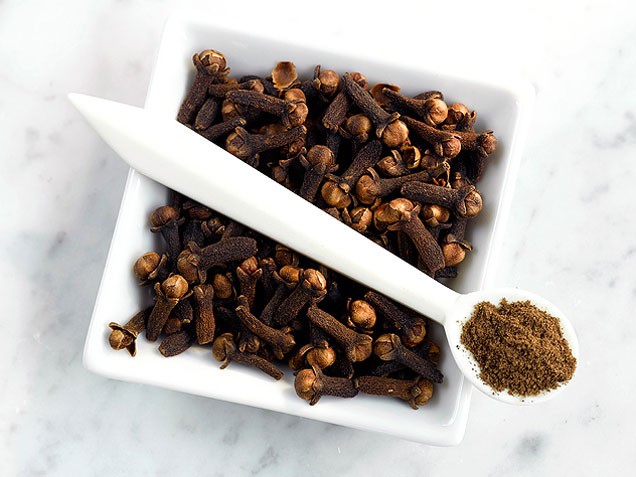
Got a toothache and can’t get to the dentist? Gently chewing on a clove can ease tooth pain and gum inflammation for two hours straight, say UCLA researchers. Experts point to a natural compound in cloves called eugenol, a powerful, natural anesthetic. Bonus: Sprinkling a 슠 teaspoon of ground cloves on meals daily may also protect your ticker. Scientists say this simple action helps stabilize blood sugar, plus dampen production of artery-clogging cholesterol in as little as three weeks.
Heal heartburn with cider vinegar

Sip 1 tablespoon of apple cider vinegar mixed with 8 ounces of water before every meal, and experts say you could shut down painful bouts of heartburn in as little as 24 hours. “Cider vinegar is rich in malic and tartaric acids, powerful digestive aids that speed the breakdown of fats and proteins so your stomach can empty quickly, before food washes up into the esophagus, triggering heartburn pain,” explains Joseph Brasco, M.D., a gastroenterologist at the Center for Colon and Digestive Diseases in Huntsville, AL.
Erase earaches with garlic
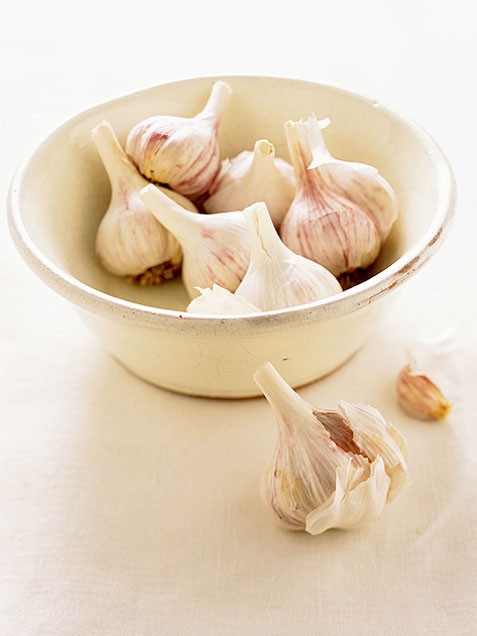
Painful ear infections drive millions of Americans to doctors’ offices every year. To cure one fast, just place two drops of warm garlic oil into your aching ear twice daily for five days. This simple treatment can clear up ear infections faster than prescription meds, say experts at the University of New Mexico School of Medicine. Scientists say garlic’s active ingredients (germanium, selenium, and sulfur compounds) are naturally toxic to dozens of different pain-causing bacteria. To whip up your own garlic oil gently simmer three cloves of crushed garlic in a half a cup of extra virgin olive oil for two minutes, strain, then refrigerate for up to two weeks, suggests Teresa Graedon, Ph.D., co-author of the book, Best Choices From The People’s Pharmacy. For an optimal experience, warm this mix slightly before using so the liquid will feel soothing in your ear canal.
Chase away joint and headache pain with cherries

Latest studies show that at least one in four women is struggling with arthritis, gout or chronic headaches. If you’re one of them, a daily bowl of cherries could ease your ache, without the stomach upset so often triggered by today’s painkillers, say researchers at East Lansing ’s Michigan State University . Their research reveals that anthocyanins, the compounds that give cherries their brilliant red color, are anti-inflammatories 10 times stronger than ibuprofen and aspirin. “Anthocyanins help shut down the powerful enzymes that kick-start tissue inflammation, so they can prevent, as well as treat, many different kinds of pain,” explains Muraleedharan Nair, Ph.D., professor of food science at Michigan State University . His advice: Enjoy 20 cherries (fresh, frozen or dried) daily, then continue until your pain disappears.
Fight tummy troubles with fish

Indigestion, irritable bowel syndrome, inflammatory bowel diseases…if your belly always seems to be in an uproar, try munching 18 ounces of fish weekly to ease your misery. Repeated studies show that the fatty acids in fish, called EPA and DHA, can significantly reduce intestinal inflammation, cramping and belly pain and, in some cases, provide as much relief as corticosteroids and other prescription meds. “EPA and DHA are powerful, natural, side effect-free anti-inflammatories, that can dramatically improve the function of the entire gastrointestinal tract,” explains biological chemist Barry Sears, Ph.D., president of the Inflammation Research Foundation in Marblehead , MA . For best results, look for oily fish like salmon, sardines, tuna, mackerel, trout and herring.
Prevent PMS with yogurt

Up to 80 percent of women will struggle with premenstrual syndrome and its uncomfortable symptoms, report Yale researchers. The reason: Their nervous systems are sensitive to the ups and downs in estrogen and progesterone that occur naturally every month. But snacking on 2 cups of yogurt a day can slash these symptoms by 48 percent, say researchers at New York ’s Columbia University . “Yogurt is rich in calcium, a mineral that naturally calms the nervous system, preventing painful symptoms even when hormones are in flux,” explains Mary Jane Minkin, M.D., a professor of gynecology at Yale University .
Tame chronic pain with turmeric

Studies show turmeric, a popular East Indian spice, is actually three times more effective at easing pain than aspirin, ibuprofen or naproxen, plus it can help relieve chronic pain for 50 percent of people struggling with arthritis and even fibromyalgia, according to Cornell researchers. That’s because turmeric’s active ingredient, curcumin, naturally shuts down cyclooxygenase 2, an enzyme that churns out a stream of pain-producing hormones, explains nutrition researcher Julian Whitaker, M.D. and author of the book, Reversing Diabetes. The study-recommended dose: Sprinkle 1/4 teaspoon of this spice daily onto any rice, poultry, meat or vegetable dish.
End endometrial pain with oats
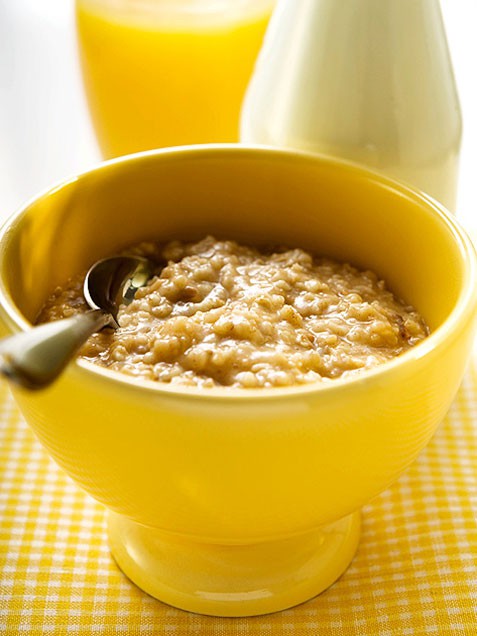
The ticket to soothing endometriosis pain could be a daily bowl of oatmeal. Endometriosis occurs when little bits of the uterine lining detach and grow outside of the uterus. Experts say these migrating cells can turn menstruation into a misery, causing so much inflammation that they trigger severe cramping during your period, plus a heavy ache that drags on all month long. Fortunately, scientists say opting for a diet rich in oats can help reduce endometrial pain for up to 60 percent of women within six months. That’s because oats don’t contain gluten, a trouble-making protein that triggers inflammation in many women, making endometriosis difficult to bear, explains Peter Green, M.D., professor of medicine at Colombia University .
Soothe foot pain with salt
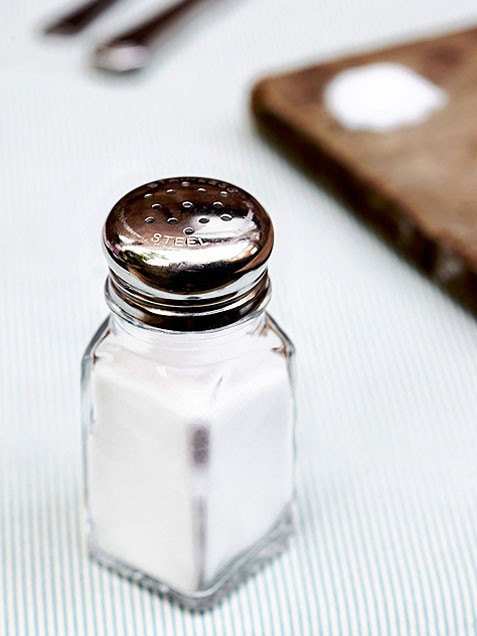
Experts say at least six million Americans develop painful ingrown toenails each year. But regularly soaking ingrown nails in warm salt water baths can cure these painful infections within four days, say scientists at California ’s Stanford University . The salt in the mix naturally nixes inflammation, plus it’s anti-bacterial, so it quickly destroys the germs that cause swelling and pain. Just mix 1 teaspoon of salt into each cup of water, heat to the warmest temperature that you can comfortably stand, and then soak the affected foot area for 20 minutes twice daily, until your infection subsides.
Prevent digestive upsets with pineapple

Got gas? One cup of fresh pineapple daily can cut painful bloating within 72 hours, say researchers at California ’s Stanford University . That’s because pineapple is natually packed with proteolytic enzymes, digestive aids that help speed the breakdown of pain-causing proteins in the stomach and small intestine, say USDA researchers.
Relax painful muscles with peppermint

Suffering from tight, sore muscles? Stubborn knots can hang around for months if they aren’t properly treated, says naturopath Mark Stengler, N.D., author of the book, The Natural Physician’s Healing Therapies. His advice: Three times each week, soak in a warm tub scented with 10 drops of peppermint oil. The warm water will relax your muscles, while the peppermint oil will naturally soothe your nerves — a combo that can ease muscle cramping 25 percent more effectively than over-the-counter painkillers, and cut the frequency of future flare-ups in half, says Stengler.
Give your back some TLC with grapes

Got an achy back? Grapes could be the ticket to a speedy recovery. Recent studies at Ohio State University suggest eating a heaping cup of grapes daily can relax tight blood vessels, significantly improving blood flow to damaged back tissues (and often within three hours of enjoying the first bowl). That’s great news because your back’s vertebrae and shock-absorbing discs are completely dependent on nearby blood vessels to bring them healing nutrients and oxygen, so improving blood flow is essential for healing damaged back tissue, says Stengler.
Wash away pain injuries with water

Whether it’s your feet, your knees or your shoulders that are throbbing, experts at New York ’s Manhattan College , say you could kick-start your recovery in one week just by drinking eight 8-ounce glasses of water daily. Why? Experts say water dilutes, and then helps flush out, histamine, a pain-triggering compound produced by injured tissues. “Plus water is a key building block of the cartilage that cushions the ends of your bones, your joints’ lubricating fluid, and the soft discs in your spine,” adds Susan M. Kleiner, Ph.D., author of the book, The Good Mood Diet. “And when these tissues are well-hydrated, they can move and glide over each other without causing pain.” One caveat: Be sure to measure your drinking glasses to find out how large they really are before you start sipping, she says. Today’s juice glasses often hold more than 12 ounces, which means five servings could be enough to meet your daily goal.
Heal sinus problems with horseradish

Latest studies show sinusitis is the nation’s number one chronic health problem. And this condition doesn’t just spur congestion and facial pain, it also makes sufferers six times more likely to feel achy all-over. Horseradish to the rescue! According to German researchers, this eye-watering condiment naturally revs up blood flow to the sinus cavities, helping to open and drain clogged sinuses and heal sinus infections more quickly than decongestant sprays do. The study-recommended dose: One teaspoon twice daily (either on its own, or used as a sandwich or meat topping) until symptoms clear.
Beat bladder infections with blueberries

Eating 1 cup of blueberries daily, whether you opt for them fresh, frozen or in juice form, can cut your risk of a urinary tract infection (UTIs) by 60 percent, according to researchers at New Jersey’s Rutgers University. That’s because blueberries are loaded with tannins, plant compounds that wrap around problem-causing bacteria in the bladder, so they can’t get a toehold and create an infection, explains Amy Howell, Ph.D. a scientist at Rutgers University .
Heal mouth sores with honey

Dab painful canker and cold sores with unpasteurized honey four times daily until these skin woes disappear, and they’ll heal 43 percent faster than if you use a prescription cream, say researchers at the Dubai Specialized Medical Center in the United Arab Emirates . Raw honey’s natural enzymes zap inflammation, destroy invading viruses and speed the healing of damaged tissues, say the study authors.
Fight breast pain with flax
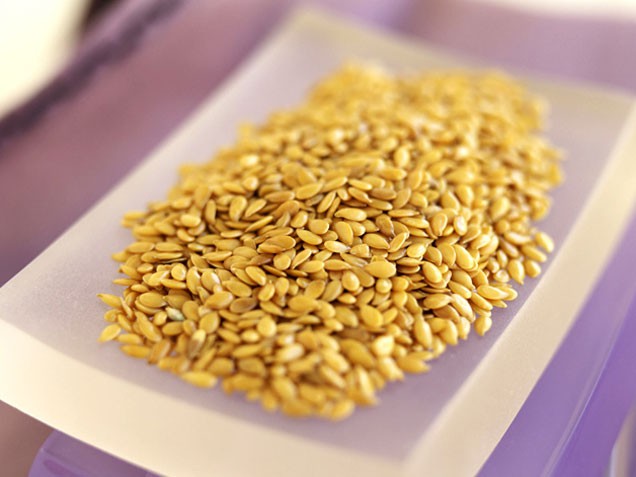
In one recent study, adding 3 tablespoons of ground flax to their daily diet eased breast soreness for one in three women within 12 weeks. Scientists credit flax’s phytoestrogens, natural plant compounds that prevent the estrogen spikes that can trigger breast pain. More good news: You don’t have to be a master baker to sneak this healthy seed into your diet. Just sprinkle ground flax on oatmeal, yogurt, applesauce or add it to smoothies and veggie dips.
Cure migraines with coffee
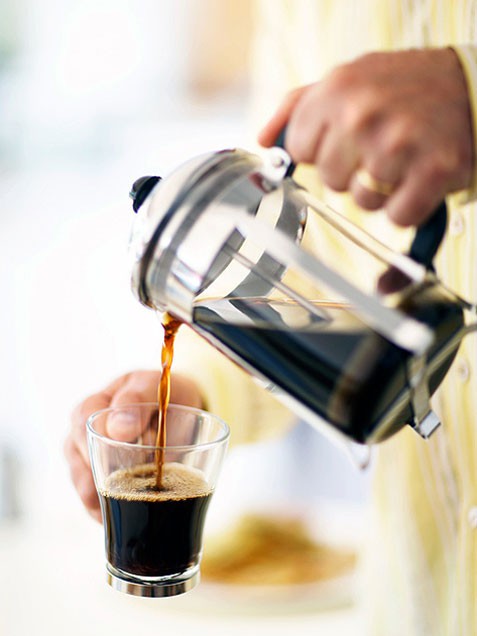
Prone to migraines? Try muscling-up your painkiller with a coffee chaser. Whatever over-the-counter pain med you prefer, researchers at the National Headache Foundation say washing it down with a strong 12- ounce cup of coffee will boost the effectiveness of your medication by 40 percent or more. Experts say caffeine stimulates the stomach lining to absorb painkillers more quickly and more effectively.
Tame leg cramps with tomato juice

At least one in five people regularly struggle with leg cramps. The culprit? Potassium deficiencies, which occur when this mineral is flushed out by diuretics, caffeinated beverages or heavy perspiration during exercise. But sip 10 ounces of potassium-rich tomato juice daily and you’ll not only speed your recovery, you’ll reduce your risk of painful cramp flare-ups in as little as 10 days, say UCLA researchers.
http://agapienxristou.blogspot.ca/2013/08/20-ways-to-cure-pain.html























